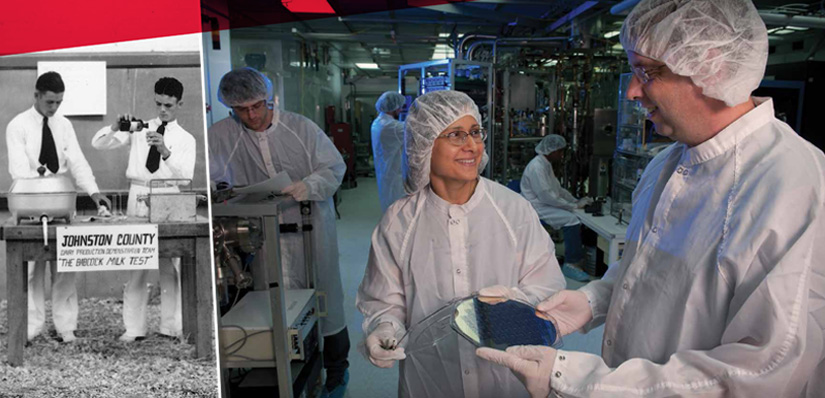Health and Well-Being
From the world’s first synthetic aorta in the mid-1950s to today’s most advanced biomedical research, NC State has long led the way in developing practical solutions to health challenges. NC State researchers work across campus — and across disciplines — to create prosthetics that function more like natural limbs, compounds that restore the effectiveness of antibiotics and fabrics that destroy microbes when exposed to light.
On NC State’s Centennial Biomedical Campus, groundbreaking discoveries in veterinary medicine are being used to diagnose and treat human health problems, such as a hidden epidemic of the blood-borne pathogen Bartonella, which can infect both cats and people.
NC State is also directing a five-year, $3 million grant from the U.S. Department of Agriculture to study the root causes of childhood obesity in low-income families. And in September, the university announced a new Engineering Research Center called ASSIST. Funded with $18 million from the National Science Foundation, the center will create health solutions that push the boundaries of medicine and technology.
ASSIST researchers will use nanostructures and nanomaterials thousands of times thinner than a human hair to develop self-powered health monitoring sensors. The researchers will also use materials that exploit body heat and motion as power sources to create devices that operate on the smallest amounts of energy. These devices could be worn on the chest as a patch, on the wrist like a watch, as a cap that fits over a tooth or in other ways, depending on the biological system being monitored.
Wireless health monitoring is already a fast-growing industry, but the self-powered technology being developed by ASSIST could soon make changing and recharging batteries in these monitoring devices a thing of the past.
It’s a tall order, but NC State — the only university in the nation leading two NSF Engineering Research Centers — is up to the task.
